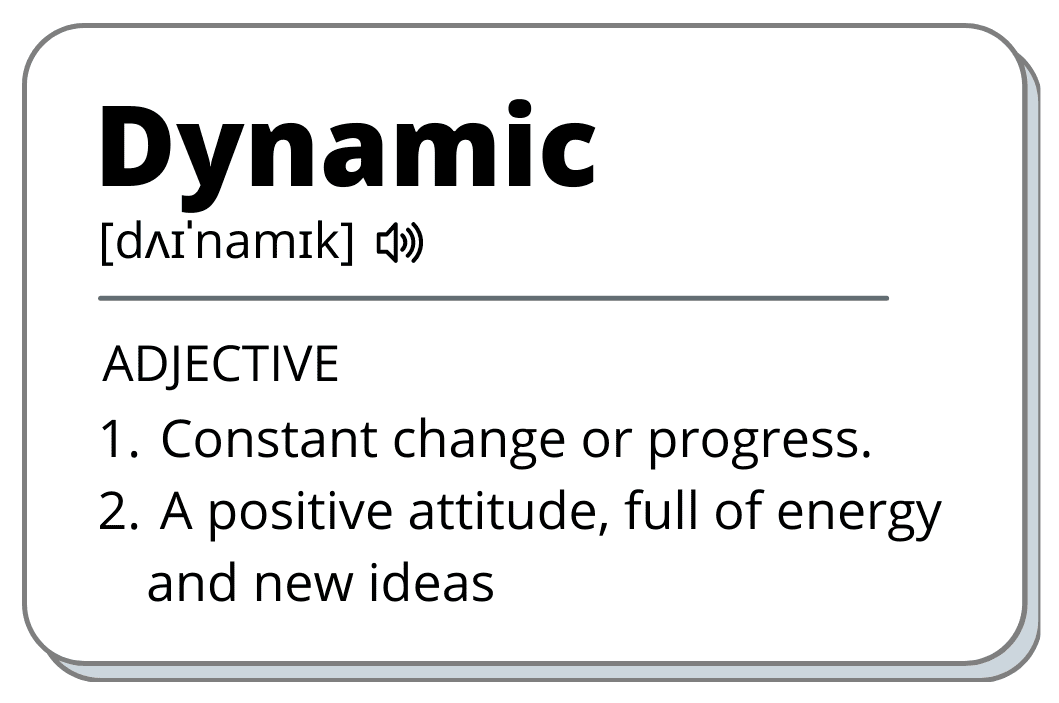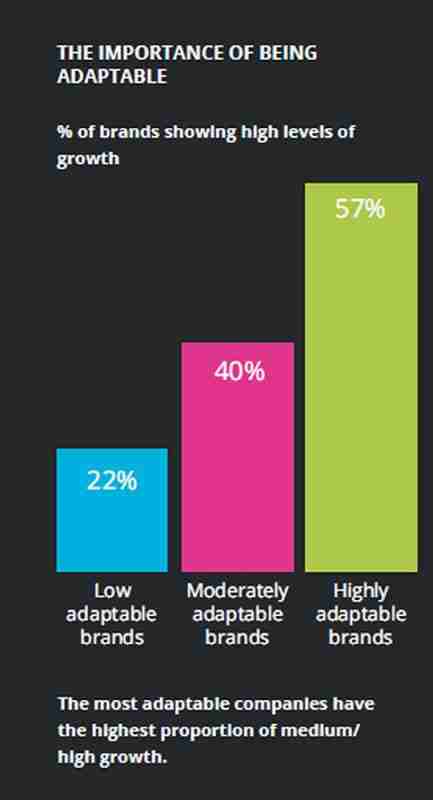What it means to be ‘dynamic’ as a driver of brand growth

Every brand aspires to thrive and grow. But the lifecycle of a brand or product can be fragile. In an ever-changing climate, some brands and products stride ahead whilst others stagnate – or enter a steady state of decline. The fact is, if you can’t keep pace with the changes around you, your brand will struggle to grow.
It’s about being dynamic.
Successful, growing brands are agile – they are able to harness opportunities, leading to market penetration, diversification and development. It’s no surprise, then, that the ability to be ‘dynamic’ is a key driver of brand growth.
But what does it actually mean to be dynamic? What does a dynamic brand look like? And how can we measure how dynamic a brand is?
How quickly do you respond and adapt to change?
To be dynamic you need energy and pace. It’s about mindset and attitude.
You need to be in tune with your market, customers and competition. Yes, you might be in a naturally dynamic and fast-paced sector, like technology – or even lucky enough to be enjoying the buzz of a brand new category – but it doesn’t always mean that your initial burst of growth within it will continue.
For some, their products will rotate around the quadrants of The Boston Matrix Brand Lifecycle – trying to avoid the often inevitable decline into low market share and low growth. Perhaps they misread the market. Or failed to spot the opportunity that their competitors so readily seized. To be dynamic and grow, you need to be on the ball. How quickly can you adapt and react to changes in demand, trends and environment?
Can you anticipate emerging trends and needs?
It’s not always enough to simply respond to change – to be truly dynamic, you have to anticipate it.
The fastest-growing, market-leading brands are innovators. They are one step ahead. They identify and harness opportunities ahead of their competitors.
They delve deep to truly explore and understand their customers’ needs, using that game-changing strategic insight to brainstorm and research new product development and emerging trends. They exude the energy and excitement required to spark ideas and champion progress and change.
- They work faster, better, differently
- They lead the way in sustainability
- They provide solutions to problems their consumers didn’t know they had
- They have real insight into how their brand and sector are evolving – tracking their brand’s health against key performance indicators
Being dynamic has an impact on consumer perceptions
We know that the fastest-growing brands are innovating and leading – they are progressive. But it’s easy to overlook the significant impact this has on brand perceptions. Being dynamic sends out a message.
Brands that are perceived as leaders and innovators are more likely to be desirable. They are aspirational, exciting and memorable – think Apple, TikTok, Tinder and Gousto.
You may wonder how dynamic you are, as a brand. Perhaps you’re already quite adept at anticipating, adapting, and evolving. But how can you tell?

Can we measure how dynamic a brand is?
Absolutely. And this is where consumer perception becomes so significant. Brand Momentum measures the extent to which you are perceived to be growing or declining. And not just by those who already use your brand – the measurement is more encompassing, including everyone who is ‘brand aware’. It looks at whether you are seen to be moving in the right direction – or not.
- How exciting is your brand?
- How are you portrayed?
- Are you known for being leaders in your sector?
- Are others promoting your brand?
- Are you being talked about for the right reasons?
Tracking your brand’s Momentum is a great indicator of how dynamic your brand is – the more agile, progressive and innovative you are, the higher your Momentum score will be. Equally telling, a low score suggests consumers associate you with stagnation and decline – you are becoming less relevant.
Brand Momentum can be accurately measured, and it’s one of the key metrics we use in BrandVision – our market-leading Brand Tracking tool. It’s a fascinating measurement that can predict those going up and those going down – a great example being our own brand health white paper on the Airline industry, highlighting Monarch’s low Momentum score shortly before its imminent collapse in 2017.
Being dynamic can require an element of risk
The creativity of dynamic brands allows them to quickly take advantage of challenging market downturns and sudden shifts in demand – even managing to boost their brand Momentum when demand unexpectedly and rapidly falls.
Corona is a great example of this. During the Covid-19 pandemic, they embraced consumers’ illogical rejection of their beer – sharing images of mounting stocks of Corona across social media to signal that the major supermarkets were only stocking their beer.
It was cheeky. It was a glimmer of humour during a global pandemic. It was clever. Signalling ‘dynamic’ to consumers boosted their brand Momentum – it called consumers out for their lack of logic.
Aldi may be infamous for its ever-evolving product range and inspired middle aisle, but it’s also quick to use humour to boost Momentum and signal ‘dynamic’. From their branding of copycat products and tongue-in-cheek response to Colin the Caterpillar Cake’s legal battle to their brilliant take on the John Lewis Christmas adverts, they are always one step ahead.
They demonstrate energy, creativity, and a genuine understanding of both their customers’ practical and emotional needs. In return, consumers see them as market leaders – a dynamic, growing brand.

It takes vision
Dynamic brands are moving and flexible. They are quick to adapt and have the confidence to anticipate and lead. It’s a state of mind and a positive attitude that enables them to be opportunists, allowing for real, sustainable growth.
However, it’s only possible for brands to anticipate emerging trends and respond quickly to changes in needs if they are armed with clear strategic insight. It’s about delving deep to really explore and understand your market and your consumers. To be truly dynamic, you need real vision.
We're here to help
Being dynamic is not the only driver of brand growth. Click here to download our free study on the 4 key drivers of brand growth. To find out more about how to measure your brand health, or how Vision One’s BrandVision brand tracking service can provide you with strategic insight to help you fast forward your brand for growth, please get in touch.
Or book a meeting with us today.